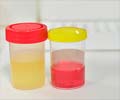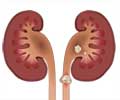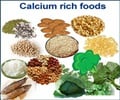A new technique to curb the growth of crystals in one type of kidney stone offers hope for preventing development of the hard deposits which can cause extreme pain, researchers reported Thursday.

The researchers used atomic force microscopy, which allows for the observation of objects as small as a nanometer, to observe the growth of the L-cystine crystals that make up one type of kidney stone.
Knowing how these crystals grew, the researchers could then select a chemical agent to inhibit this process.
"This may lead to a new approach to preventing cystine stones simply by stopping crystallization," said Michael Ward, one of the authors of the research and chair of NYU's Department of Chemistry.
"Moreover, these findings are an example of the significant advances that can be achieved through collaborations between researchers in physical sciences and in medicine."
Kidney stones comprised of L-cystine affect an estimated 20,000 individuals in the United States.
Advertisement
Although they often cause no permanent damage, kidney stones can be extremely painful and sometimes are removed by surgery or sound waves.
The findings of the latest research appear in the October 15 issue of the journal Science.
Source-AFP















